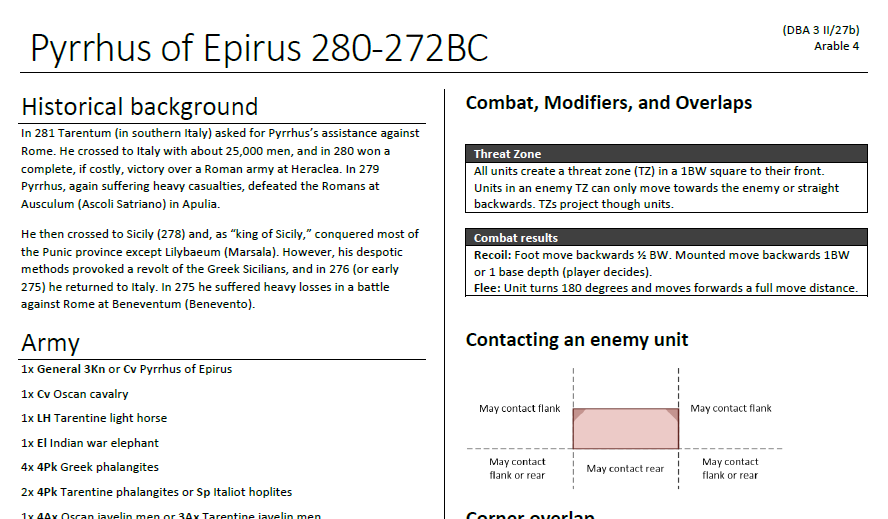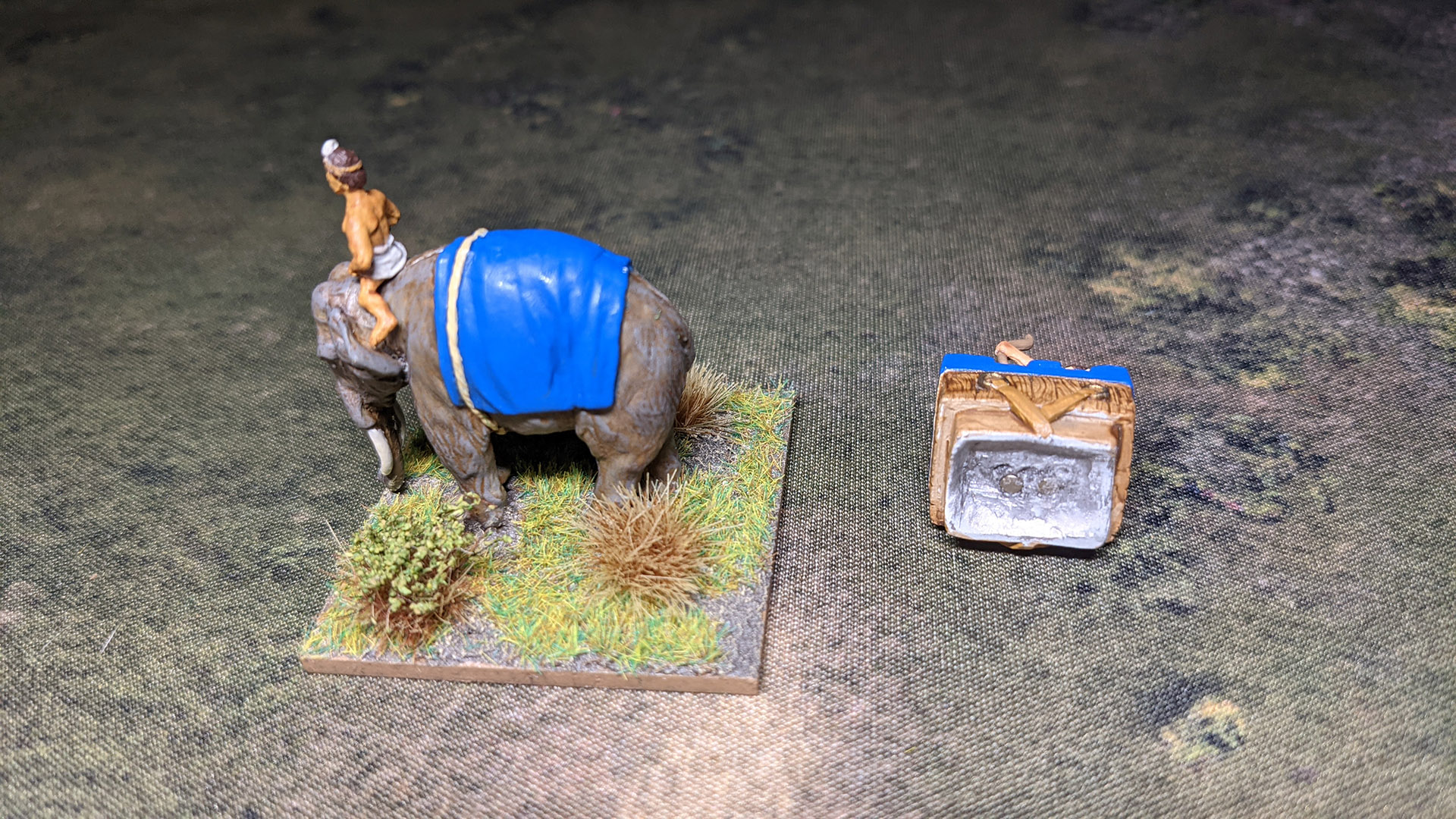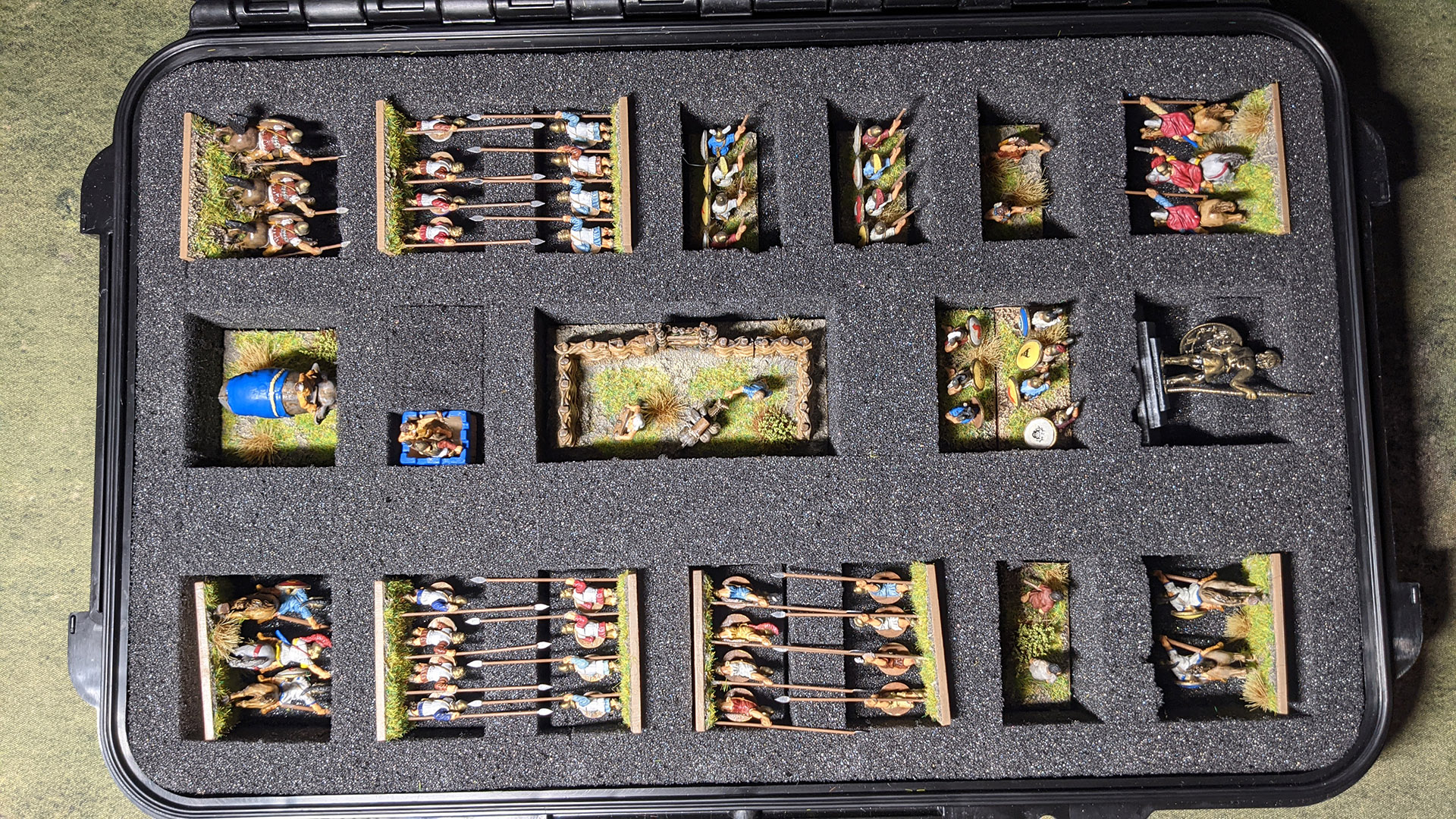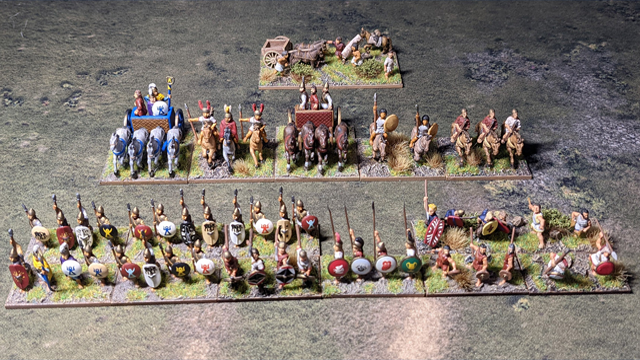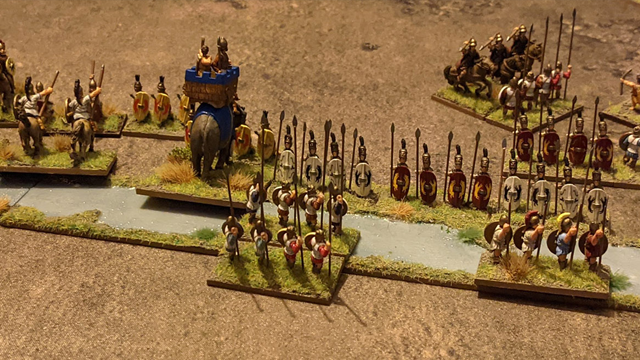Pyrrhus is a wargaming classic! Famous for defeating Rome in battle but at a massive cost, coining the term Pyrrhic victory*
The Pyrrhic war was the first time the Roman legion went up against the Macedonian Phalanx pitting two of the most famous infantry formations in the ancient world in head to head battle. Pyrrhus is also famous for his use of elephants, another new opponent for the Romans.
*Before Pyrrhus, a costly victory was known as a Cadmean victory, after the Greek hero Cadmus.
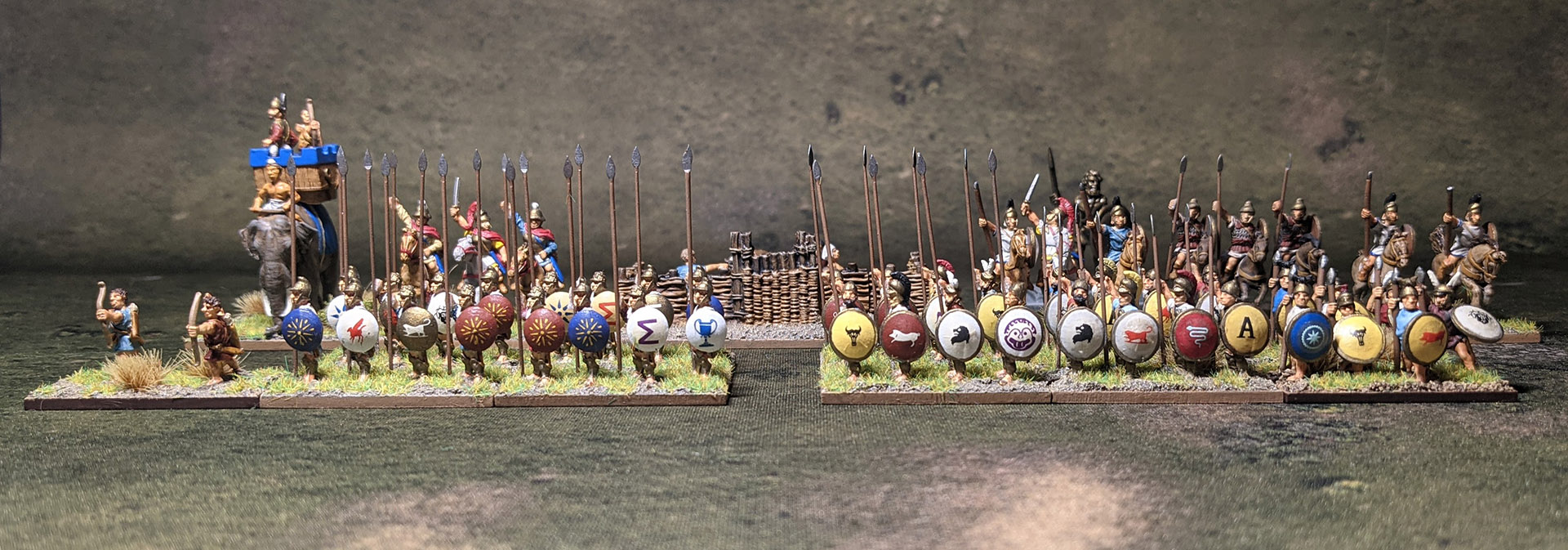
The army arrayed for battle. Heavy foot in the centre, with light foot on the flanks. The cavalry and elephants form the rear line, either side of the camp.
How do they play?
This is not a beginners army. On the one hand you have a good selection of units, with plenty of heavy infantry and good mounted troops. Only having two units of light infantry can be limiting, especially if you're attacking an army that works well with lots of terrain on the table.
My biggest challenge is how to deploy the spear and pike. Taking six units of pike gives a powerful punch, but the need to double them up heavily reduces your frontage and leaves you open to being flanked and in DBA flanking is everything!
Taking four units of pike and two of spear allows you to extend your line but you're then left with the choice of how to deeply the line. Placing the spear in the flanks of a double pike block places your most powerful units together in the middle for punch, but spear only receive the +1 side support (often known as 'shield wall') from other spear or blades, so the pike won't help.
Alternatively you can place the spear in the middle with the pike on the flanks, which gives them the +1 side support (so they fight as +5 rather than +4) and it matches descriptions of how Pyrrhus deployed his troops (pike phalanx interspaced with hoplites. The problem with this approach is that the pike fight at +7 and pursue 1/2BW so they grind forward while the spear are held in place with their +5 and no pursue. This exposes the flank of the pike which can make a bad dice roll disastrous.
So far in my games as Pyrrhus I have used the infantry as the main offence and it doesn't work. Next I need to try using the mounted units and elephants to punch forward, or maybe six pike with mounted flank guards (update to follow)
[tabs]
[tab title="Army list"]
- 1x General 3Kn or Cv Pyrrhus of Epirus
- 1x Cv Oscan cavalry
- 1x LH Tarentine light horse
- 1x El Indian war elephant
- 4x 4Pk Greek phalangites
- 2x 4Pk Tarentine phalangites or Sp Italiot hoplites
- 1x 4Ax Oscan javelin men or 3Ax Tarentine javelin men
- 1x Ps Greek archers
- 1x Camp (optional)
[/tab]
[tab title="What is DBA?"]
De Bellis Antiquitatis or DBA is a set of fast play rules for historical wargaming the period 3000 BC to 1520 AD. Currently in it's 3rd edition, it is popular for it's fast play (typically under an hour), low model count (the picture above represents an entire army) and suitability for tournament play.
The most popular scale is 15mm on a 600mm square battlefield, but 28mm, 6mm, and 2mm are also played on appropriately sized tables.
The rules take less than 10 pages, with the rest of the book consisting of example diagrams and a complete set of army lists. Unfortunately the rules are written in a style that can be hard to interpret, however a large and active online community work to make the new player experience as easy as possible.
[/tab]
[tab title="Online DBA resources"]
- Fanaticus DBA - Wiki and forum dedicated to DBA
- Board Game Geek - DBA page
- Facebook group
- Essex miniatures - Popular UK manufacturer of 15mm miniatures including DBA army packs.
- Noble Knight Games - US distributor of Essex minis
[/tab]
[/tabs]
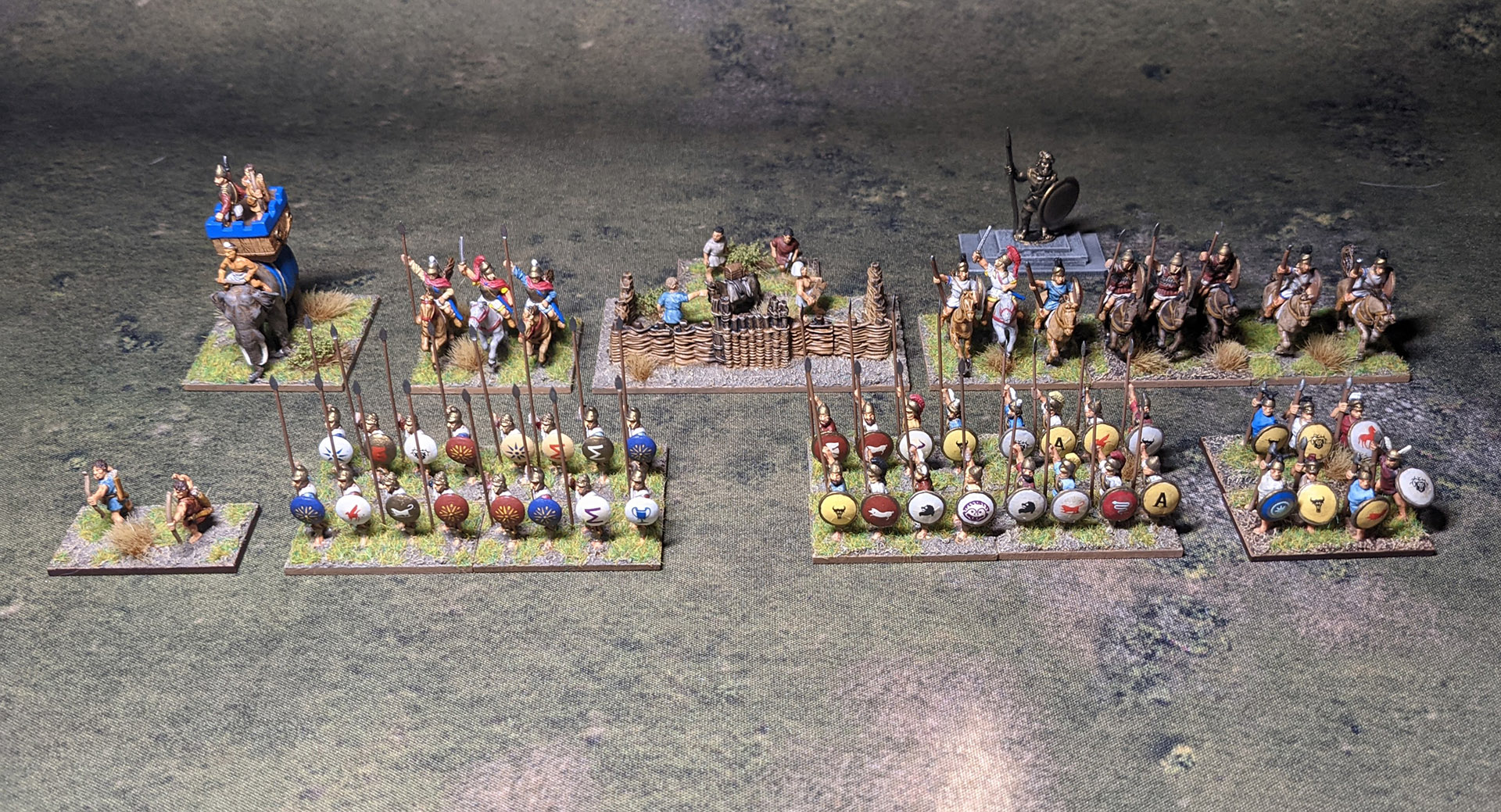
On the left are the Greek units, Elephants and Macedonian phalangites provided by Ptolemy Thunderbolt (likely to keep Pyrrhus away from his Macedonian ambitions) as well as Pyrrhus himself with his companion cavalry. On the right foot and mounted units provided by his Italian and Sicilian Hellenic allies.
Quick Reference sheet
To help introduce new players to DBA I have created a set of quick reference sheets for all my armies. These 2 sided sheets contain most of the information needed to play the army, along with some historical background and tips on strategy.
You can download all the sheets on from the DBA folder on my public OneDrive.
Gallery
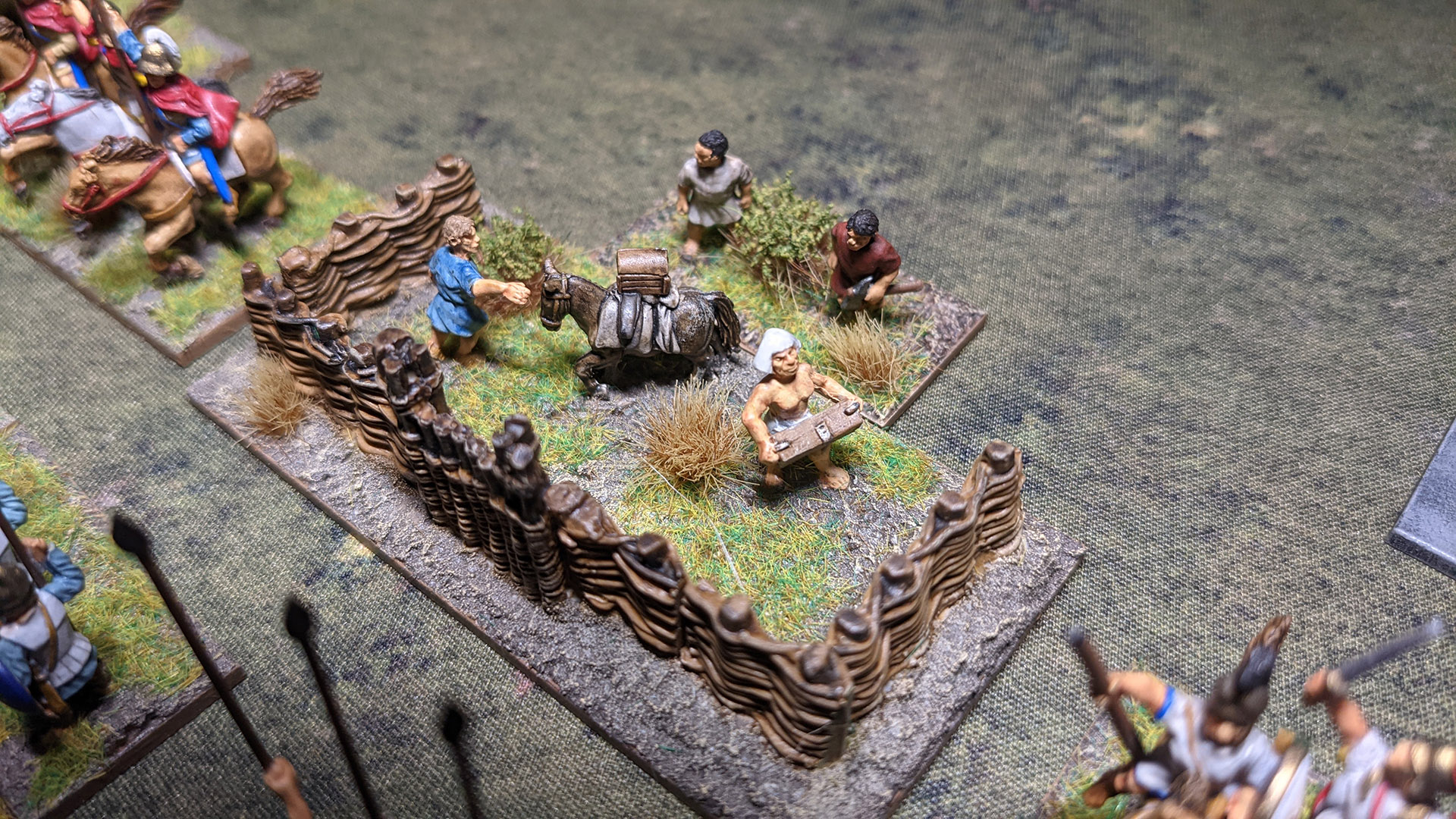
Camp figures are Essex, the fence is from Baueda and looks great with a simple, base coat, drybrush, wash paint job. Behind the camp are the separate camp followers. I hardly use these, so I only have one unit to share between all my Hellenic armies.

Italiot pike and spear, showing the size difference. I replace the cast spears with wire ones whenever possible (Essex metal is quite soft which is great for customising but terrible for spears).
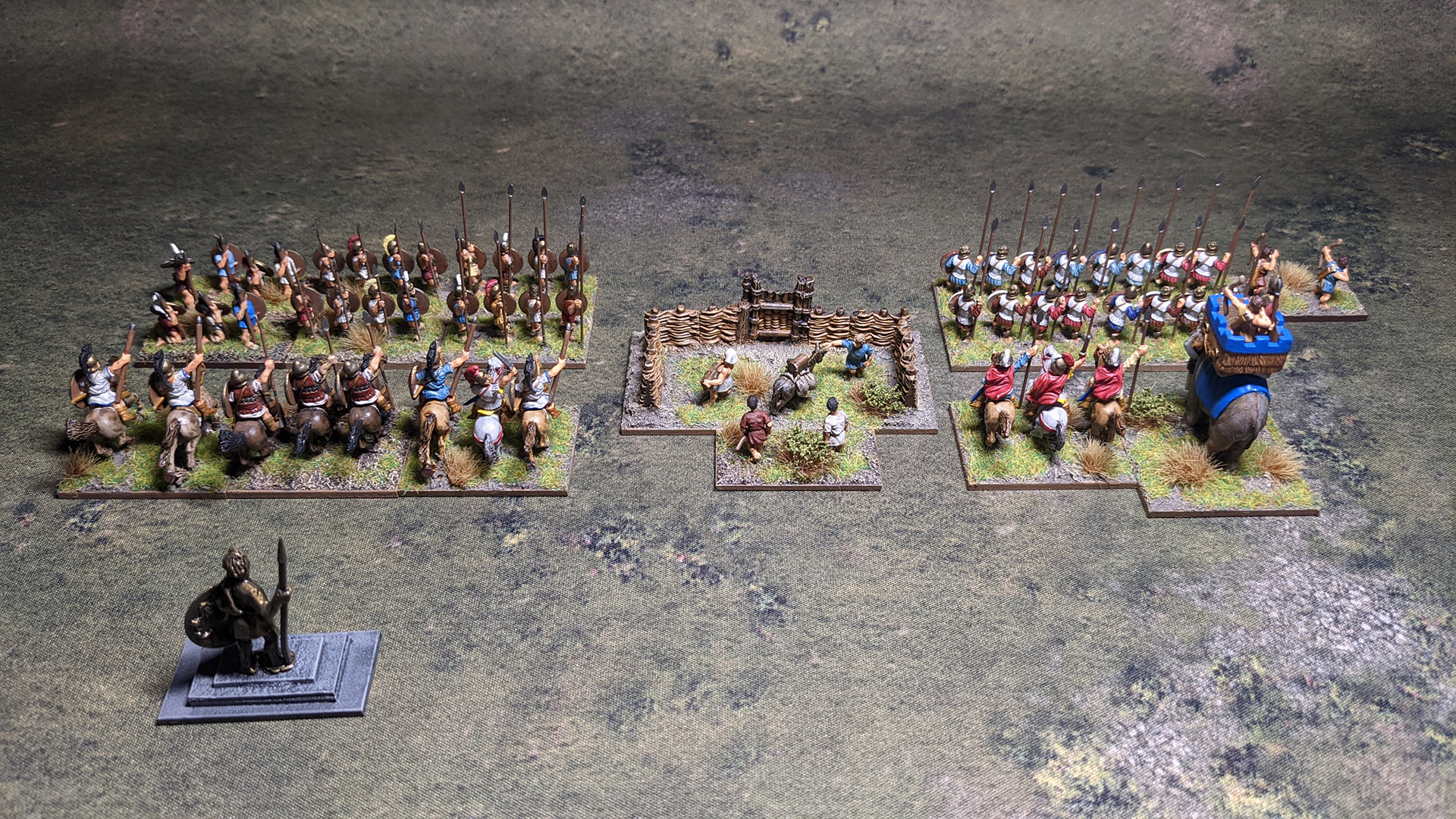
My usual view of the army. All that effort on shields and I hardly get to see them! The larger figure is a 28mm mini painted as a bronze statue on a 40x20mm base and is used a measuring device (a half Barker square). I have a 40x40 version for a full Barker square, very useful for marking threat zones.
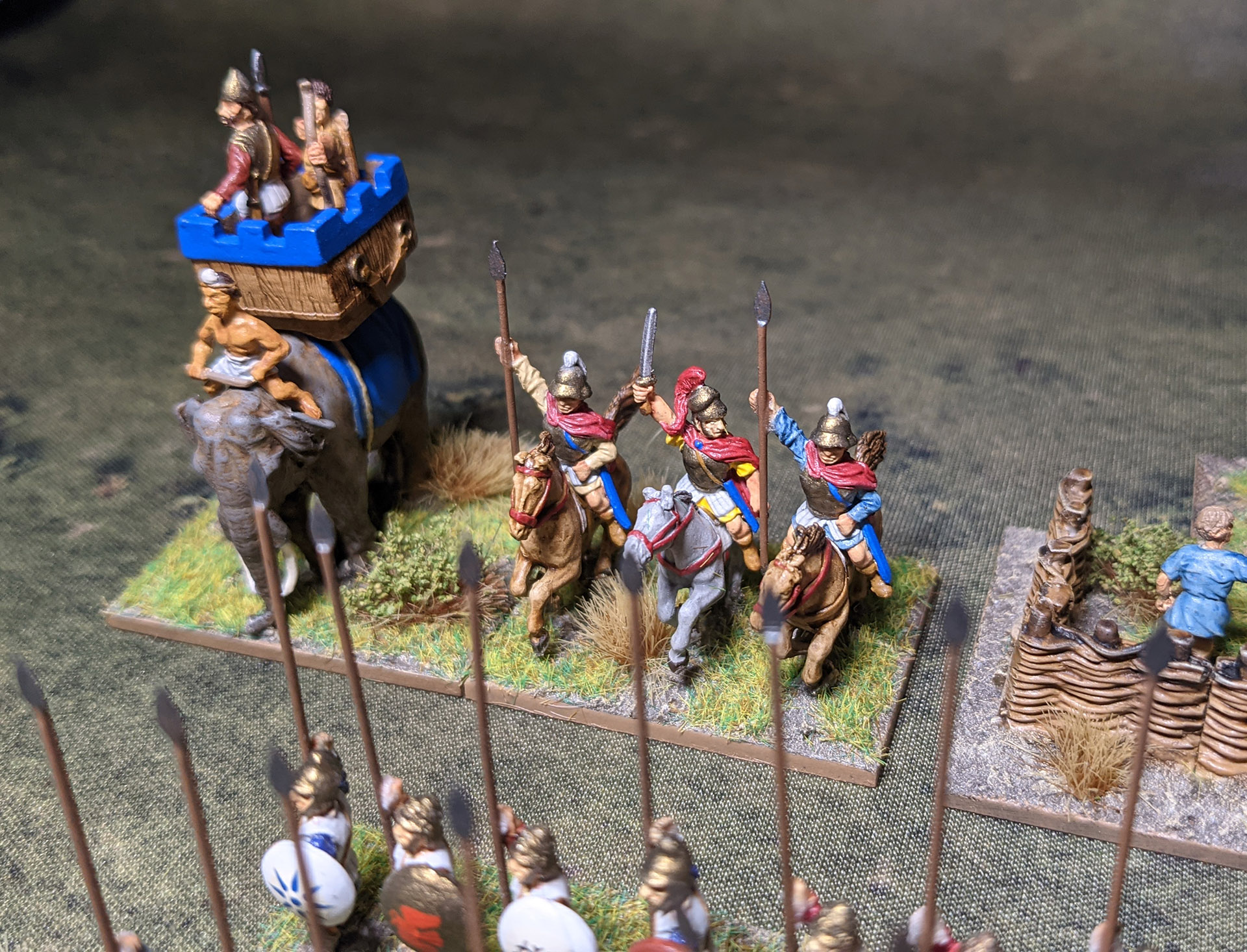
The man himself, Pyrrhus of Epirus with his companion cavalry (3Kn in DBA) next to a suitably imposing elephant. Pyrrhus had Indian elephants which were larger than the African forest elephants used by Carthage, so I've added a howda to add extra height. As with all my generals Pyrrhus is on a white horse making him easy to spot.
